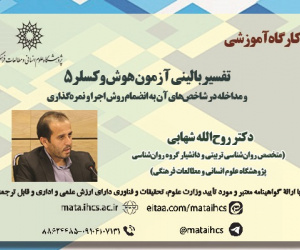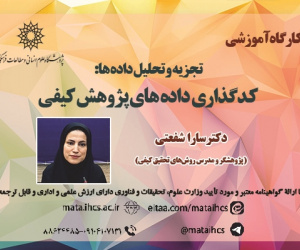واکاوی دگرسانیِ نگرشیِ مفسران شیعه درباره مفهوم «زینت» در آیه 31 سوره نور (مقاله پژوهشی حوزه)
درجه علمی: علمی-پژوهشی (حوزوی)
آرشیو
چکیده
نظرداشت سیر تاریخیِ اندیشه ها در بررسی معنای واژگان و دقت در دگرسانی ها و یا نگرش هایِ رخ داده، کلیدی است که خاستگاه نگره و عوامل تحول آفرین آن را بازتاب می دهد و زمینه های دگرسانی و دگرگونی معنای واژگان و یا ثبات معنایی آن را در سیر تاریخی نمایان می سازد. این مسئله، زمانی اهمیت بیشتری می یابد که واژه، دارای بار معناییِ اجتماع محور باشد و دگرسانی ها یا تغییرات معناییِ آن، بر احکام اجتماعی تاثیراتی عینی بگذارد. از جمله این واژگان، واژه «زینت» است که در برخی از آیات قرآن، از جمله در آیه 31 سوره نور آمده است و بار اجتماعی دارد. بر پایه ضرورتی که گفته شد، نگاشته پیش رو با بهره گیری از روش توصیفی- تاریخی واژه زینت را در نگره های مفسران شیعی بررسی می کند. نتیجه بررسی نشان می دهد این نگره ها در دوران متقدم تا قرن هشتم، بر تفسیر معنای زینت به زینت های عارضی و زیورآلات تأکید دارد، اما از سده نهم، نگره عورت انگاری جزئی یا کلی بدن زن- در نظریه های مفسران سنت مدار- رخ بر می آورد و با نزدیک شدن به عصر معاصر، نُمود بیشتری به خود می گیرد. دقت نظر در نگره های یادشده نشان می دهد زمینه های این تغییر نگرش را می توان در موارد ذیل جستجو نمود: «تقابل خوانش سنت محور با خوانش نواندیشانه از مسئله حقوق زنان»، «خوانش مردسالارانه از احکام»، «ارائه راهکار برای کنترل حریم جنسی» و «ارتقای جایگاه اجتماعیِ فعالانه زن در عصر امروز».Analysis of the Attitudinal Transformation of Shi'ite Commentators concerning the Concept of “Zīnat” in Verse 31 of Sūrat Al-Nūr
Considering the historical course of thoughts in examining the meaning of words and paying close attention to the transformations or attitudes that have occurred is the key that reflects the origin of the view and the factors that create its transformation and reveals the grounds for the change and transformation of the meaning of words or its semantic stability in the historical course. This issue becomes more important when the word has a socially oriented semantic implication and its semantic transformations or changes have objective effects on social rulings. Among these words is the word “ z īnat ” (charms) which is mentioned in some verses of the Qur'an, including in verse 31 of Surat al-N ūr and has a social implication. Based on the necessity mentioned above, the present article examines the word " z īnat " in the views of Shi'ite commentators using a descriptive-historical method. The results of the study show that in the early period until the eighth century, these views emphasized the interpretation of the meaning of " z īnat " as temporary charms and jewelry, but since the ninth century, the outlook of partial or total assumption of the female body as pudenda mulieris (woman's private parts) appeared in the views of traditional commentators and became more prominent as the contemporary era drew near. A careful look at the mentioned views shows that the grounds for this change in attitude can be sought in the following areas: "the contrast between the tradition-oriented version and the innovative version of women's rights", "the patriarchal version of the rulings", "providing a solution for controlling gender-specific privacy" and "the promotion of the active social status of women in today's era".








